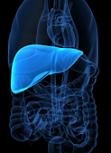Advertisment
BTS 2014 Report: British Association for the Study of the Liver (BASL) Forum: Donor optimisation

Maria Dalby reporting on the Oral Presentation by Peter Friend, Oxford Transplant Centre, University of Oxford et al. Peter Friend, Oxford Transplant Centre, University of Oxford / Chris Watson, Addenbrooke’s Hospital, Cambridge / Colin Wilson, Freeman Hospital, Newcastle upon Tyne / James Neuberger, NHSBT / Dorry Segev, Johns Hopkins University, Baltimore, USA.
Liver transplantation is facing a significant challenge in terms of the quality of donated organs. Donation rates have gone up in response to recent initiatives to increase the number of donors, but most organs available are high risk due to risk factors such as age, obesity, medical co-morbidities, or DCD. Meanwhile, the incidence of liver disease is on the increase and the waiting list is outgrowing the actual number of transplantations an alarming pace. The question for liver transplantation professionals is how to utilise a greater number of higher-risk organs for transplantation without compromising the short- and long-term outcomes.
Thanks to advances in technologies for enhancing organ preservation during the ischaemic phase, static cold storage has now been replaced by continuous perfusion technologies that can deliver oxygen and provide nutrients whilst keeping the organ at a physiological temperature. The OrganOx device, developed at Oxford University by Professor Peter Friend and co-workers, is the world’s first fully automated extracorporeal normothermic liver perfusion device and has been shown to improve survival after transplantation of both standard and marginal-criteria livers in pigs [1]. A Phase I study is currently underway in collaboration with King’s College and Birmingham hospitals; all 20 patients included in the study have been transplanted and have so far made good post-operative recovery and been discharged. Six-month follow-up data and matched control data will be presented when available.
Another recent development that can limit the ischaemia time, and thus improve transplantation outcomes, is normothermic regional perfusion (NRP) of the abdomen after death. Professor Chris Watson from Cambridge pointed out that NRP is comparatively cheap and simple to do and may in fact act as a pre-conditioning stimulus of marginal livers, potentially improving tolerance to cold ischaemia. A Spanish study which compared organ donation after sudden death in the community from DBD donors and DCD donors undergoing NRP showed that patient survival post-transplantation was comparable in the two groups, whilst graft survival was inferior in the DCD group [2].
Even for experienced transplant surgeons, transplantation extended-criteria livers from DCD donors may at times seem like trying to make a silk purse out of a sow’s ear. However, as pointed out by Colin Wilson, transplant surgeon at Freeman Hospital in Newcastle, whilst there are no magic potions that can miraculously transform marginal livers into ideal livers, the former can be optimised by employing strategies such as oxygen persufflation for prevention of ischaemic injury [3,4], and ‘defatting’ to enable use of steatotic livers [5].
From an NHSBT point of view, despite the increasing number of marginal livers and the persistent number of patients dying or being removed from the transplant waiting list, post-transplantation outcomes continue to improve. Professor James Neuberger reminded the audience that in the last 15 years survival rates after transplantation have more than doubled, despite the fact that the average donor has got older and heavier, as well as less healthy due to cardiovascular disease, malignancies and drug abuse. Summing up, Dorry Segev pointed out that there is indeed such a thing as a ‘right’ recipient for a marginal liver, as well as a centre to perform the transplantation, and the challenge from an allocation point of view is to make sure these criteria are fulfilled.
References
1. Brockmann, J., et al., Normothermic perfusion: a new paradigm for organ preservation. Ann Surg, 2009. 250(1): p. 1-6.
2. Fondevila, C., et al., Applicability and results of Maastricht type 2 donation after cardiac death liver transplantation. Am J Transplant, 2012. 12(1): p. 162-70.
3. Minor, T., et al., Oxygen persufflation as adjunct in liver preservation (OPAL): study protocol for a randomized controlled trial. Trials, 2011. 12: p. 234.
4. Treckmann, J., et al., Retrograde oxygen persufflation preservation of human livers: a pilot study. Liver Transpl, 2008. 14(3): p. 358-64.
5. Nativ, N.I., et al., Liver defatting: an alternative approach to enable steatotic liver transplantation. Am J Transplant, 2012. 12(12): p. 3176-83.





